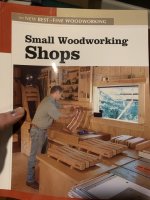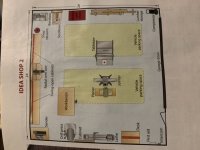We have a house about to start construction and when it's done I'll finally have a shop space. Currently I dont have any "shop" tools, only power tools and site tools like my table saw.
I'd like to start getting some stuff for my shop now, and buy over time. Things I know I'll need or want:
Planer
Joiner
Drill press
And I'm sure I need more.
What will provide the most utility and what should I prioritize. I mostly do remodeling and I've done some custom cabinet work. Would like to start doing more cabinetry and furniture work, like table tops and benches.
Thanks
I'd like to start getting some stuff for my shop now, and buy over time. Things I know I'll need or want:
Planer
Joiner
Drill press
And I'm sure I need more.
What will provide the most utility and what should I prioritize. I mostly do remodeling and I've done some custom cabinet work. Would like to start doing more cabinetry and furniture work, like table tops and benches.
Thanks


